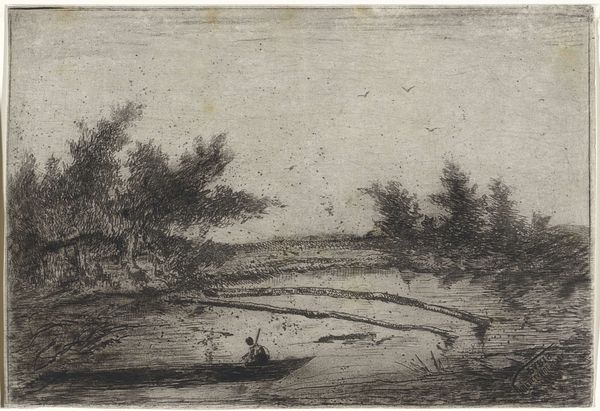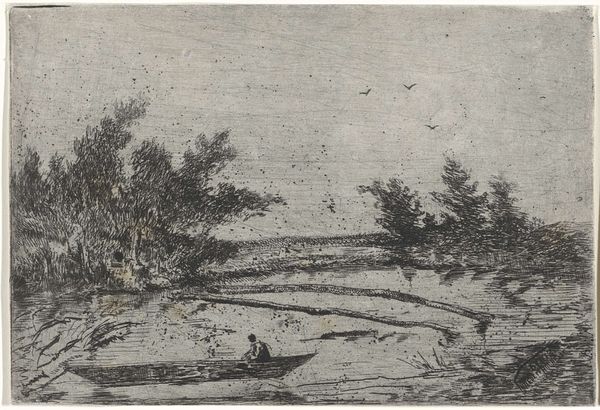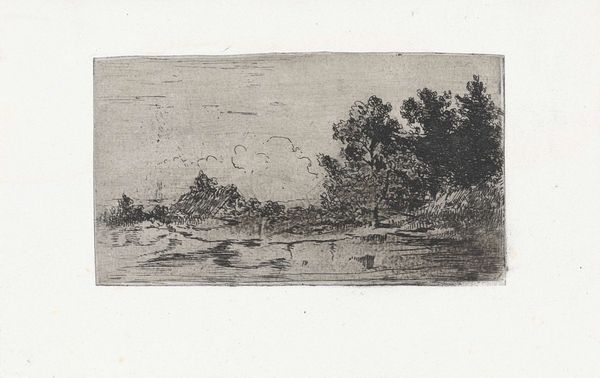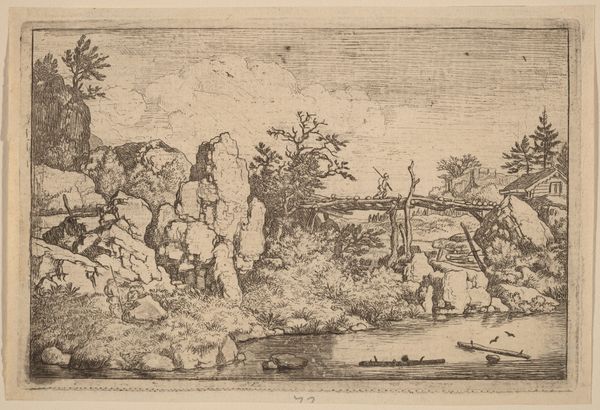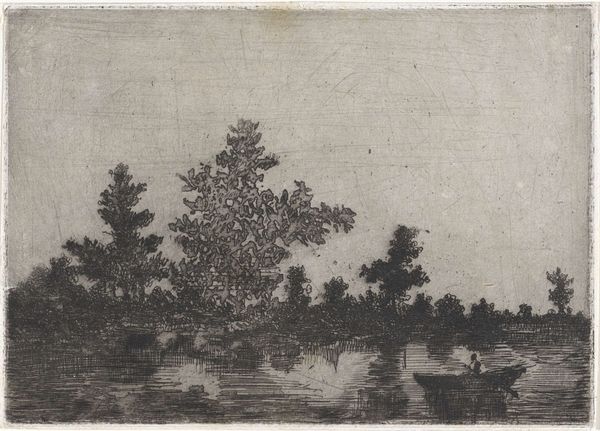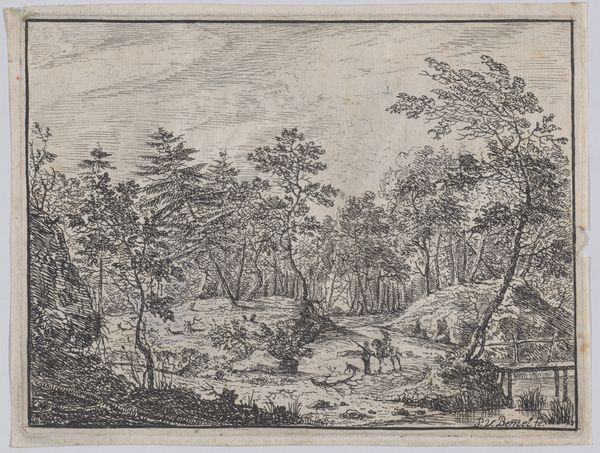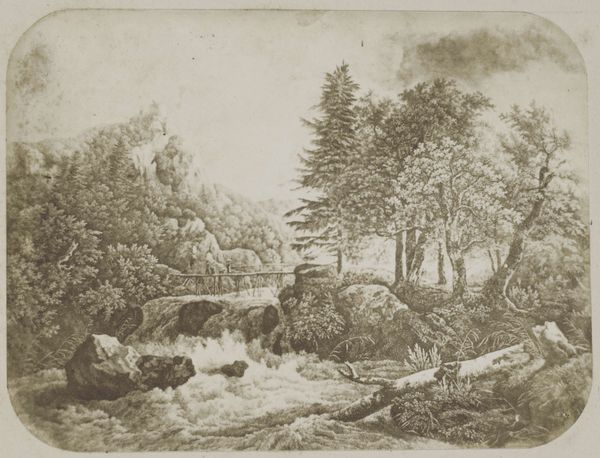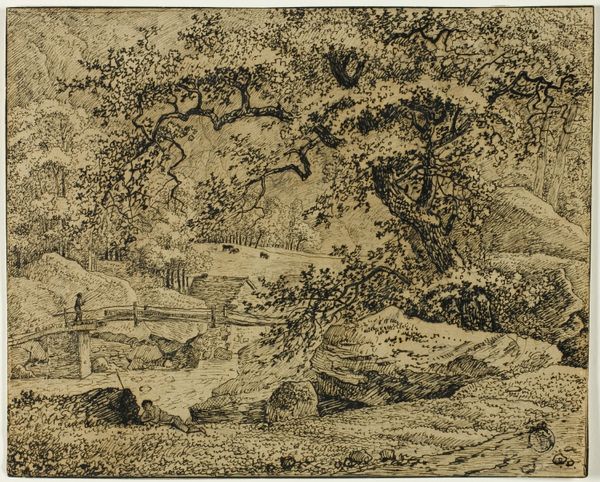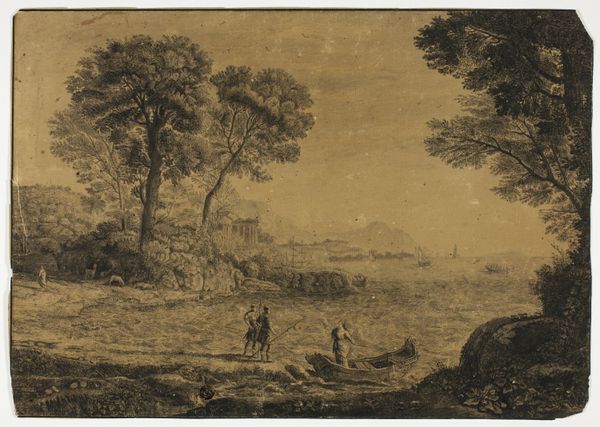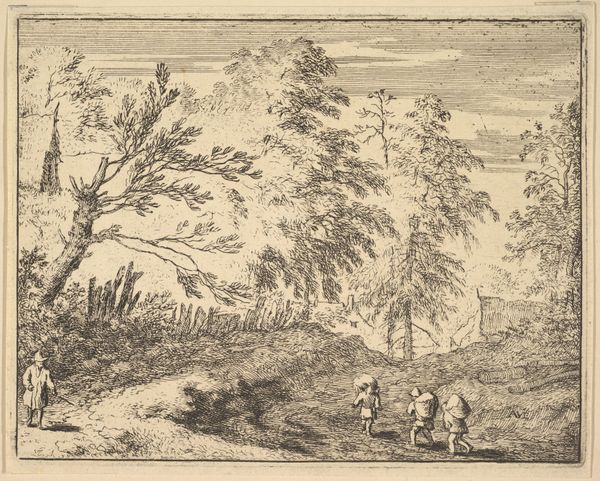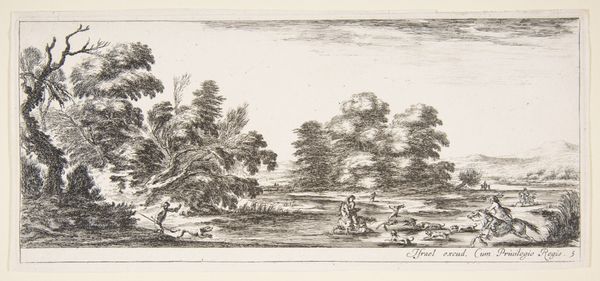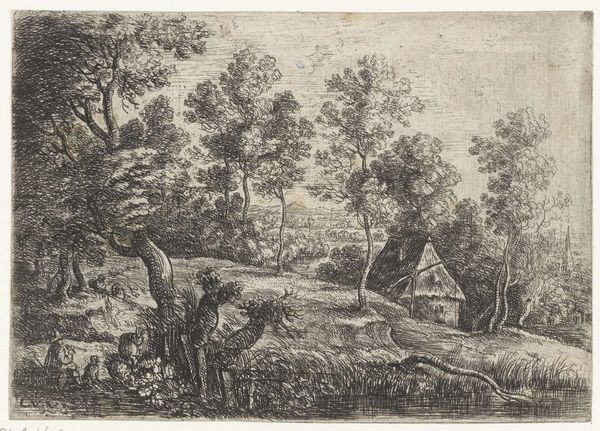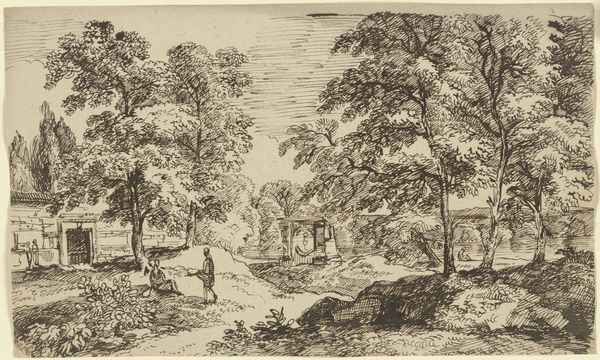
drawing, print, etching
#
drawing
#
16_19th-century
# print
#
etching
#
landscape
#
realism
Dimensions: height 149 mm, width 235 mm
Copyright: Rijks Museum: Open Domain
Alexander Schaepkens made this print, *Huizen aan de river*, using etching, a printmaking technique that dates back to the Middle Ages. The image starts as a metal plate, usually copper or zinc. The etcher covers the plate with a waxy, acid-resistant ground. Then, using a needle, they scratch away lines of the composition, exposing the metal. The plate is then submerged in acid, which bites into the exposed lines, creating grooves. The longer the plate sits in the acid, the deeper the lines become, allowing for a range of tones in the final print. The plate is inked, and then wiped clean, leaving ink only in the etched lines. Finally, the plate and a sheet of paper are run through a press under high pressure, transferring the ink to the paper. The result is an image with a characteristic velvety texture, a testament to the labor-intensive process involved. Schaepkens’ print provides us with a glimpse into 19th-century Dutch life. The print represents a skilled process that straddles the line between craft and fine art, reminding us of the value of both concept and execution.
Comments
No comments
Be the first to comment and join the conversation on the ultimate creative platform.
